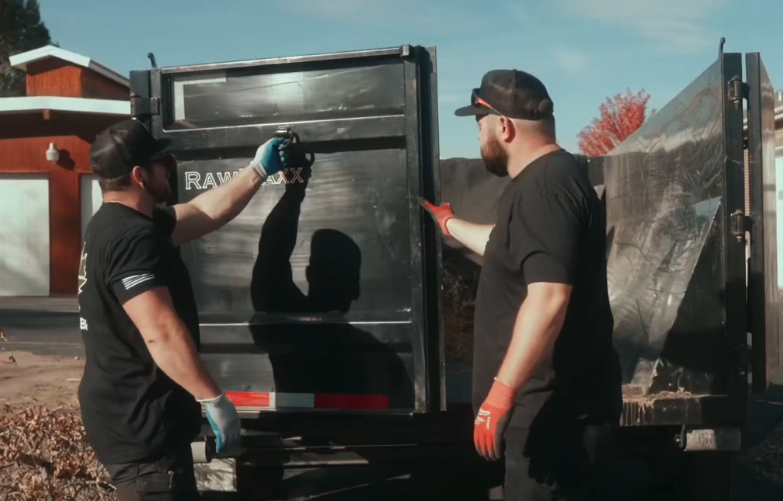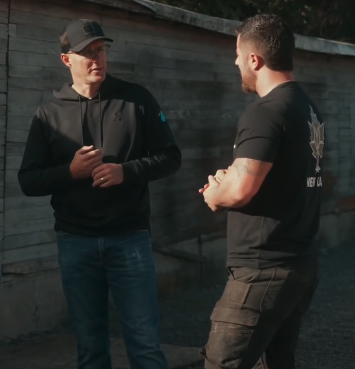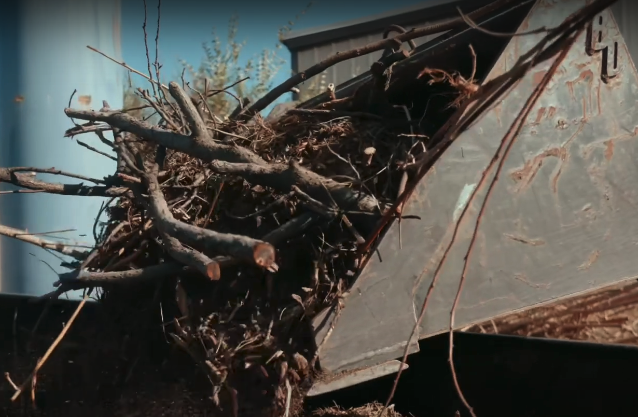
Utah’s unique landscape and climate create specific challenges for property maintenance, from managing seasonal debris to tackling construction waste. As the owner of Utah Tree Co. and New Leaf Junk Removal, I’ve handled thousands of cleanup projects across the Salt Lake Valley. Over the years, I’ve developed strategies to help Utah homeowners navigate these challenges effectively. Here’s your comprehensive guide to getting your yard in top shape.
Understanding Utah’s Unique Yard Junk Removal Challenges
Climate and Terrain Considerations
Utah’s high-desert climate brings challenges ranging from extreme summer heat to freezing winter temperatures. These fluctuations affect outdoor spaces and the materials beneath them, such as irrigation systems and concrete foundations. The Salt Lake Valley’s soil composition—rich in clay, salts, and minerals—requires careful handling for ground installations and material removals. Adding to the complexity are local regulations governing waste disposal and environmental protection, making thoughtful planning essential for maintaining a safe and compliant property.
Common Yard Issues in Utah
Utah homeowners frequently encounter issues like fence damage caused by the freeze-thaw cycle, which shifts concrete footings and leads to leaning structures. Drought conditions also leave properties with dying trees and vegetation that pose fire hazards and damage risks. Seasonal yard waste, from spring pruning to fall leaves, can quickly accumulate without regular maintenance. Additionally, the state’s housing boom has left many properties littered with construction debris, which requires specialized disposal to comply with local regulations.
Professional Services vs. DIY
Knowing when to handle a project yourself versus hiring professionals can save time, money, and stress.
When to Call Professionals
Some situations demand professional tools, expertise, and handling:
- Heavy materials, such as tree stumps or concrete slabs, that require specialized equipment for safe removal.
- Projects involving Utah’s challenging soil conditions, like concrete removal, where professional tools prevent property damage.
- Hazardous or regulated materials requiring proper permits and disposal methods.
- Time-sensitive projects, where professionals can ensure fast and efficient completion.
DIY-Appropriate Tasks
For simpler projects, rolling up your sleeves is a great option:
- Collecting yard waste like leaves and branches.
- Removing small furniture or easily transportable items.
- Sorting recyclable materials.
- Handling basic landscape debris like pruned branches.
Cost Considerations for Utah Homeowners
Pricing Factors
Cleanup costs depend on four primary factors. First, the scope of the project and the types of materials involved significantly influence pricing. The volume and nature of waste—whether it’s green waste like branches and leaves or heavier materials like concrete or construction debris—play a major role. Green waste is typically less expensive to dispose of due to its recyclable nature, while materials requiring specialized handling tend to be more costly.
Second, equipment requirements can impact costs. Some projects demand the use of cranes, stump grinders, or heavy-duty haulers to ensure the work is completed efficiently and safely. These specialized tools add to the overall expense but are essential for handling challenging tasks.
Labor intensity is another factor to consider. Complex projects that require careful dismantling or involve accessing hard-to-reach areas may take more time and manpower, thereby increasing costs. Finally, disposal fees at local facilities vary depending on the type of waste being handled. Selecting the most cost-effective and compliant disposal methods is crucial to keeping overall expenses manageable.
Value-Added Services
Professional services provide benefits that go beyond basic cleanup. Same-day service availability ensures flexibility and reliability, accommodating urgent needs when necessary.
Environmental responsibility is another critical advantage. By partnering with recycling facilities, professionals divert a significant amount of waste from landfills, reducing environmental impact and often lowering disposal costs. Comprehensive liability insurance offers protection and peace of mind, safeguarding properties during the cleanup process.
Additionally, detailed disposal documentation is provided for every project. These records are particularly useful for real estate transactions, HOA compliance, or personal records, ensuring transparency and proof of proper waste management. Opting for professional services means not only completing a project efficiently but also doing so in a responsible and reliable manner.
Best Practices for Yard Cleanup
Seasonal Timing
Timing your yard cleanup by season can maximize efficiency and results.
In spring, focus on clearing winter debris, removing fallen branches, and preparing soil for new growth. Summer is ideal for addressing fire hazards by removing dead vegetation and clearing garden beds.
In the fall, concentrate on leaf removal and stabilizing trees in preparation for winter storms.
Finally, winter is a slower season for outdoor work, offering the opportunity to organize indoor spaces and plan spring projects.
Eco-Friendly Disposal
Responsible waste management protects Utah’s environment.
Consider options like recycling green waste, metals, and certain woods to divert them from landfills. Local organizations often accept gently used furniture or outdoor equipment for donation. Composting yard waste can also create nutrient-rich soil for your garden, while hazardous materials like old paint or treated wood require professional handling to meet state regulations.
Making Your Project Successful

Success in yard cleanup begins with thorough preparation and attention to detail. From pre-project planning to post-cleanup strategies, following these steps ensures a smooth and effective process.
Pre-Project Checklist
Preparation is critical for a successful cleanup. These essential steps can make or break your project:
Start by assessing your property. Walk through the entire space, identifying areas that need attention, and take photos and notes. This step helps track progress and document conditions, a habit I developed during my military service. Next, create a detailed scope of work to define the tasks and items requiring removal. A clear plan prevents scope creep and ensures accurate pricing.
Before any digging or large-scale work, contact Blue Stakes of Utah (811) to have utilities marked. Ignoring this step can lead to costly and dangerous accidents. Evaluate how equipment and workers will access the property, taking into account gate widths, overhead obstacles, and terrain conditions. Finally, inform neighbors of the project, especially if it might create noise or affect shared spaces. Clear communication can prevent unnecessary conflicts.
Post-Project Considerations
Completing a cleanup project is just the beginning. Proper restoration ensures long-term satisfaction and avoids future issues. Stabilize all disturbed areas to prevent erosion, especially in Utah’s unpredictable weather. Develop a maintenance schedule tailored to your property needs to avoid future accumulation.
Consider installing preventive measures, such as proper drainage or root barriers, to mitigate recurring problems. Documentation is also crucial: save receipts for waste disposal, take before-and-after photos, and keep records of the work. This is often required by HOAs or municipalities and is invaluable for maintaining property records.
Emergency Services and Special Situations
Emergencies demand swift, decisive action, and my team is trained to handle urgent situations with efficiency and care.
Urgent Response Needs
Storm damage, fallen trees, and immediate safety hazards require immediate attention. Our 24/7 rapid response team is equipped to handle these scenarios with precision. For property sales or other time-sensitive needs, we ensure fast turnaround to meet deadlines and secure your property’s condition.
Special Project Handling
Certain projects require specialized expertise. For historic properties, we employ careful extraction techniques to preserve structural integrity. In protected vegetation areas, we adhere to regulations to ensure compliance while minimizing environmental impact. Contaminated materials demand professional testing and disposal, and for multi-unit properties like HOAs or apartment complexes, we coordinate logistics to minimize disruptions.
Choosing the Right Service Provider
Key Qualifications
✓ Local Experience: Providers should understand Utah’s unique challenges, including soil composition and regulations.
✓ Proper Licensing and Insurance: Ensure contractors are licensed and fully insured to protect your property and workers.
✓ Environmental Compliance: Professionals must follow Utah’s waste disposal laws and partner with reputable disposal facilities.
✓ Proven Track Record: Look for contractors with local references and a history of successful projects.
Red Flags to Watch For
✗ Too-Good-to-Be-True Pricing: Unusually low quotes often signal cut corners, whether in disposal methods, equipment, or insurance.
✗ Improper Equipment: A reliable contractor should have the tools and resources to handle your project, and not rely on rentals.
✗ No References: A lack of local references or testimonials is a warning sign of inexperience or poor service.
✗ Vague Disposal Methods: Professionals should clearly explain where and how materials will be disposed of. Ambiguity may indicate illegal dumping.

Contact and Next Steps
Ready to transform your property? Contact us for a free assessment and experience reliable, professional service tailored to Utah homeowners.
- Call: (801) 803-0317
- Email: info@newleafjunkremoval.com
- Visit: www.newleafjunkremoval.com
What to Expect:
- Initial Consultation: We’ll discuss your needs and timeline.
- On-Site Assessment: Receive a detailed quote and project plan.
- Scheduling: Choose a convenient time, including same-day options.
- Execution: Enjoy professional, efficient service.
Service Areas:
We proudly serve the Salt Lake Valley, and Utah County, including Salt Lake City, West Valley, Sandy, Murray, Holladay, Lehi, Provo, and other surrounding communities.
Let us help you protect your property and maintain its value while safeguarding Utah’s environment. Contact us today!
